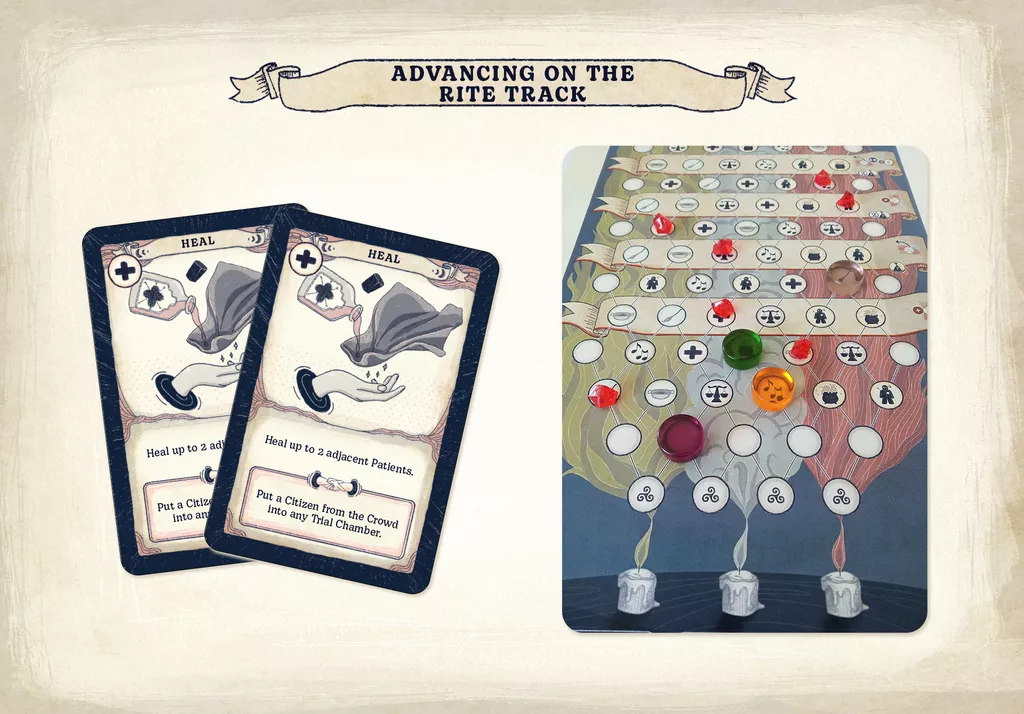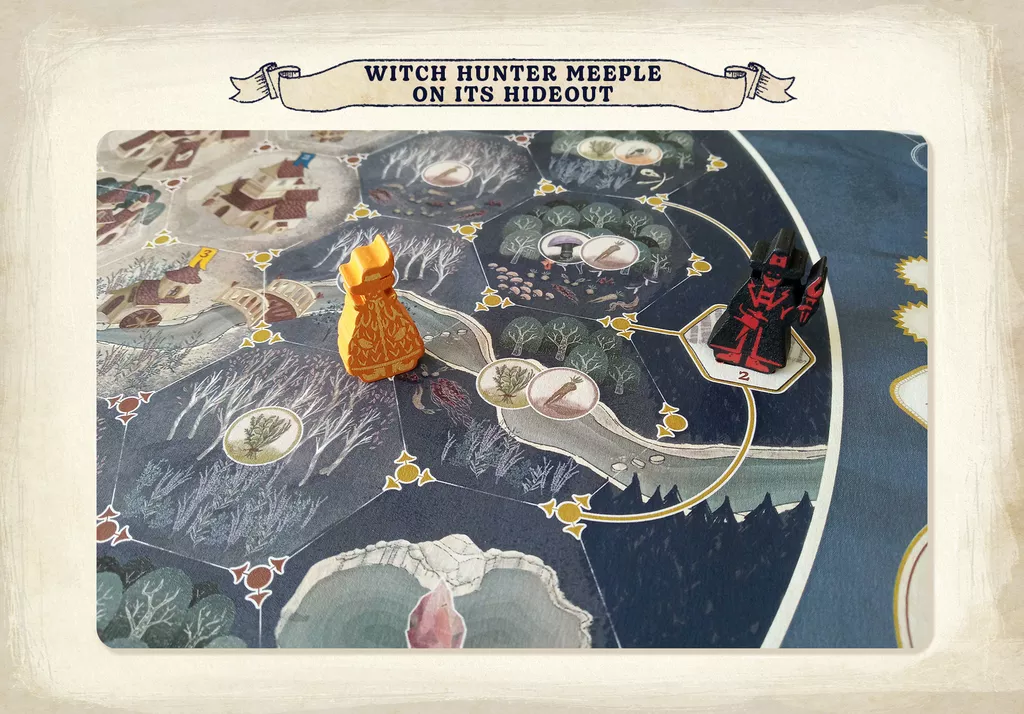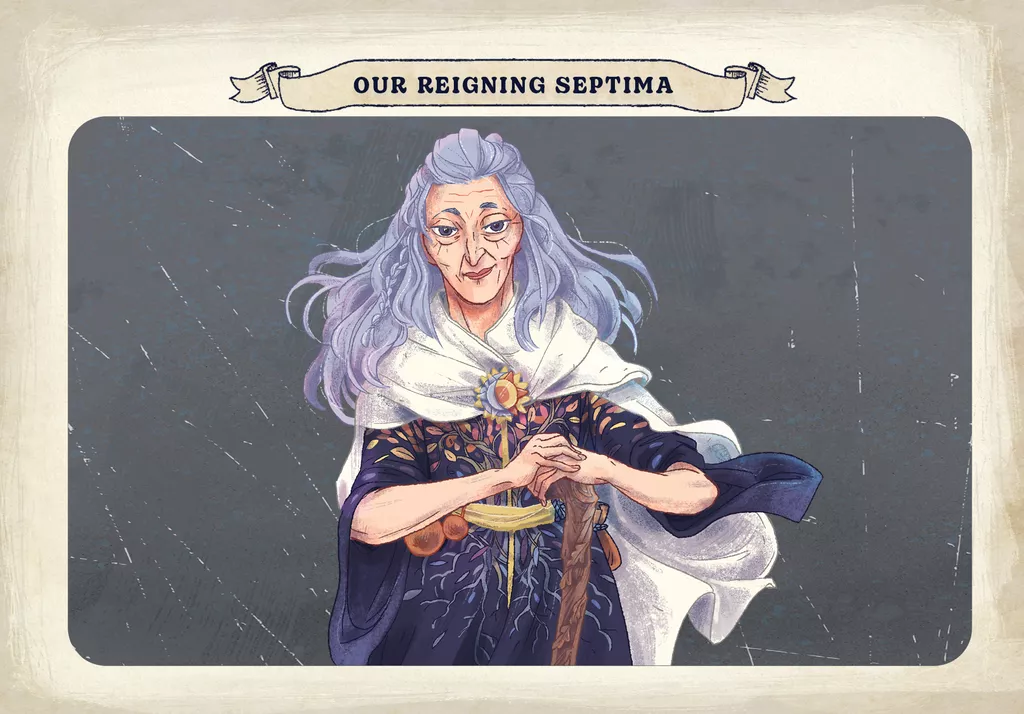Positive Interaction in Matching and Risk Management
2022. May 12.
Hello everyone! I’m back with a new installment of my Design Spotlight series for Septima. Originally this second one was meant to be about the world and lore that we created around the game, but judging from the comments you are more eager to know more about the actual mechanics of the game, so I decided to swap things around: In this chapter and the next, I'll go into greater details about the mechanics in the game and how they formed during the development. Obviously, there’s only so much I can describe without revealing the entire game and spoiling the campaign, but hopefully this will be a good read about my goals and general thinking when designing Septima. Let’s get into it!

When the world of witches first came up during Board Game Hatchery (mentioned in the previous diary), I immediately knew this theme would be perfect for a game where the relations between players are multi-layered and the motivations depend on the situation. In books and movies, witches are often depicted as proud and independent folks, who like to do things in their own way, but in the face of danger, they cooperate and combine their own unique strengths to prevail. The first game with this theme that came to mind is the Kennerspiel des Jahres winner Broom Service, a game about witches who are managing their potion delivery service in a pick-up and deliver style game flow. That game uses an action selection system with high player interaction but shows us a different archetype of witches: the mischievous one that likes to mess with the plans of others and incite mayhem. In the game, all players choose an action card simultaneously, but if another player chooses the same, the player later in playing order takes everything, and the other players receive nothing. I like Broom Service, even if it gets a bit crazy sometimes, but my friends slowly started saying no to it, because it is very punishing if you miscalculate the actions of others. As the witch archetype in my head is quite different and more nuanced, I wanted a similar action selection system, but with a twist to make it more positive and rewarding while keeping the aspect of the players trying to guess the moves of others.
In Septima, the players choose actions simultaneously every round as well. After revealing them, if you have chosen your action alone, you simply resolve it. But if an action card has been chosen by multiple players, all participating players can add the card’s unique Collective Bonus to their action. And it doesn’t end there: if you time your action match well, you additionally get to advance on the Rite track, granting you access to powerful, strategy-defining Charms. These two bonuses are independent of each other and create a very interesting dynamic in player interactions. For example, you might NOT want to match if it also pushes your opponent up on the Rite track, but not you!

Nonetheless, those turns when you can pull off a “perfect match”, and maybe even get a Charm to boot, feel extremely satisfying and “combotastic”!

All that brings up a very obvious question: why wouldn’t all players want to match all the time if it is so beneficial? The answer comes from another core thematic idea of the game: what happens if some already suspicious, eccentric people get together to do some…unusual things? They, of course, become more suspicious to the community. That means that all players who participate in a matching action must also raise their Suspicion on their track, risking to attract the Witch Hunters.
The suspicion and antagonism towards witches in Septima is represented by the terrifying Witch Hunters, whose only goal is to bring witches to trial and exile them from the town. The dark forest surrounding the town offers many precious ingredients to the witches, but it’s also where the Witch Hunter Hideouts are: the closer you venture to them, the more likely you are to be caught.

If you match with your action, you will draw a nearby Witch Hunter’s attention: your current Suspicion level and the result of a Hunter die roll together make the patrol range of the Hunter, and if you are within it, one of your Witches will be captured. Initially, with low Suspicion across the board and several empty Hideouts the map feels fairly safe, but with new Witch Hunters added almost every Season, just a few reckless matches can quickly get you into trouble.
All that said, I’m a Euro player at heart, and while I wanted tension, I certainly did not want die rolls to dominate the game. 🙂 There are actually many ways to protect your coven and mitigate the luck factor in Septima. You can always do your own thing to keep a low profile for a while, or move smartly around the town and simply stay out of range to avoid Hunters. You can even take the fight to them with various potions and Charms that can neutralize them, or open up a magical escape route in a pinch.

At this point, a question I heard many times as I pitched the game was: how do you manage the different player counts if the player interaction is so important? The answer comes from Septima herself! Since her people are competing to be her successor, she is obviously also present in the town to witness the events. She uses the same actions as the players, allowing them to match with her as well. Depending on player count she takes 1 or 2 actions per round, and these actions are known in advance, so players can plan around it. However, few things are more suspicious than working with the town’s mysterious old lady, so the guaranteed collective bonus is kept in check with double Suspicion raised. It is important to clarify that the Septima is not a bot as in several solo games: her actions are not actually resolved and she has zero upkeep, but she does give a nice tableau of options even in two-player games.
There’s still plenty to talk about, but I’ll stop here to leave some topics for next week, when we will talk about the Trials and the Covens in a little more detail. Thanks for reading, and see you then!
Robin